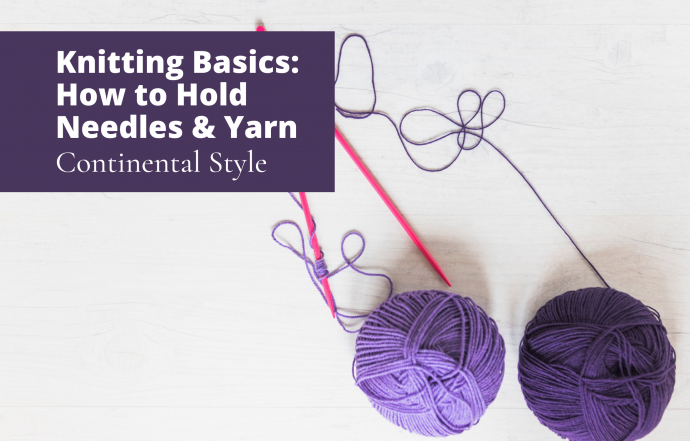Unlike traditional English style of knitting, Continental knitting incorporates the left hand. This method is faster, and many beginner knitters who already know how to crochet and are used to holding the yarn in their left hands find this method easiest.

Continental knitting is good if you’ve moved to knitting after mastering crochet – in crochet the yarn is held in the hand opposite the hook. It’s also a lot quicker to do the knit stitch in continental knitting – while purl is quicker if you use the English method. If you can switch from one style to the other then you will be able to knit stocking stitch far more speedily – one row knit in continental style, one row purl in English style.
This style holds and tensions the yarn in the left hand, and with the yarn in the left hand, it takes less motion to get the yarn around the tip of the right needle and pull the new stitch through. The right needle just “picks” the yarn up to grab it. I like the speed and efficiency I can get with this method, without using a knitting pin or putting the yarn behind my neck.
Continental method of holding yarn and needles

1. Hold the needle with the stitches in your right hand. Wrap the yarn around your little finger and then around the index finger of your left hand. Transfer the needle back to your left hand. Press the working yarn against your left needle to make sure you have some tension while you knit.
2. Insert your right needle into your next stitch on the left needle.
3. Lift your left index finger up and begin to wrap your working yarn around the right needle.
4. With your right index finger pinch the working yarn and stitch down onto your right needle. This will ensure that it does not slide off the needle while you finish knitting that stitch.
5. Push your right needle through the stitch, controlling the tension with your left index finger.
6. Pull your stitch off the left needle.



I am personally interested in knitting, esp. patterns, also tips & tricks… not crochet.